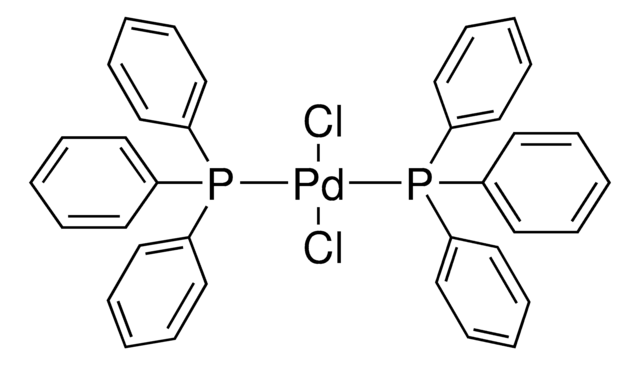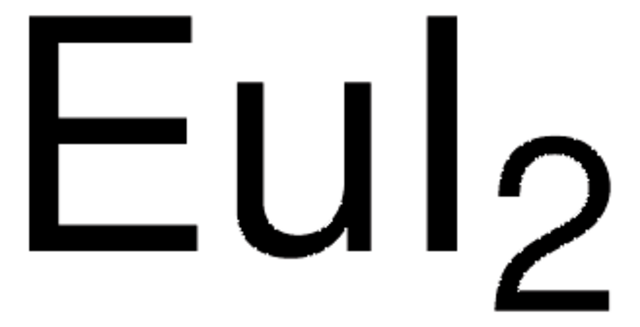215554
Copper(I) iodide
99.999% trace metals basis
Synonyme(s) :
Cuprous iodide
About This Item
Produits recommandés
Pression de vapeur
10 mmHg ( 656 °C)
Niveau de qualité
Essai
99.999% trace metals basis
Forme
powder and chunks
Impuretés
≤15.0 ppm Trace Metal Analysis
pb
1290 °C/1 atm (decomp)(lit.)
Pf
605 °C (lit.)
Solubilité
dilute aqueous acid: insoluble(lit.)
Densité
5.62 g/mL at 25 °C (lit.)
Application(s)
battery manufacturing
Chaîne SMILES
[Cu+].[I-]
InChI
1S/Cu.HI/h;1H/q+1;/p-1
Clé InChI
LSXDOTMGLUJQCM-UHFFFAOYSA-M
Vous recherchez des produits similaires ? Visite Guide de comparaison des produits
Application
- For arylation of pyrazole and derivatives by coupling arenediazonium species under mild and ligand-free conditions.
- Selective cross-coupling of dibromo alkenes and heteronucleophiles which leads to numerous building blocks such as 1-bromoenamides, ynamides, ketene N, N-acetals, 1-bromoenol ethers, ynol ethers, ketene O, O-acetals, and vinyl phosphonates.
- Stereospecific and the regioselective reaction of silacyclopropanes with carbonyl compounds.
Caractéristiques et avantages
- Low toxicity
- Mild reaction condition
- High purity ensures reproducibility and avoids cocatalysis by contaminants.
Mention d'avertissement
Danger
Mentions de danger
Conseils de prudence
Classification des risques
Acute Tox. 4 Oral - Aquatic Acute 1 - Aquatic Chronic 1 - Eye Dam. 1 - Skin Irrit. 2 - Skin Sens. 1A - STOT RE 1 Oral
Organes cibles
Thyroid
Code de la classe de stockage
6.1C - Combustible acute toxic Cat.3 / toxic compounds or compounds which causing chronic effects
Classe de danger pour l'eau (WGK)
WGK 3
Point d'éclair (°F)
Not applicable
Point d'éclair (°C)
Not applicable
Équipement de protection individuelle
dust mask type N95 (US), Eyeshields, Gloves
Faites votre choix parmi les versions les plus récentes :
Certificats d'analyse (COA)
Vous ne trouvez pas la bonne version ?
Si vous avez besoin d'une version particulière, vous pouvez rechercher un certificat spécifique par le numéro de lot.
Déjà en possession de ce produit ?
Retrouvez la documentation relative aux produits que vous avez récemment achetés dans la Bibliothèque de documents.
Les clients ont également consulté
Articles
We carry a large variety of electrophiles and nucleophiles that are widely used in C–C bond-forming reactions. This group of products contains many organometallic reagents as well as commonly-used alkylating and acylating reagents.
Notre équipe de scientifiques dispose d'une expérience dans tous les secteurs de la recherche, notamment en sciences de la vie, science des matériaux, synthèse chimique, chromatographie, analyse et dans de nombreux autres domaines..
Contacter notre Service technique
















